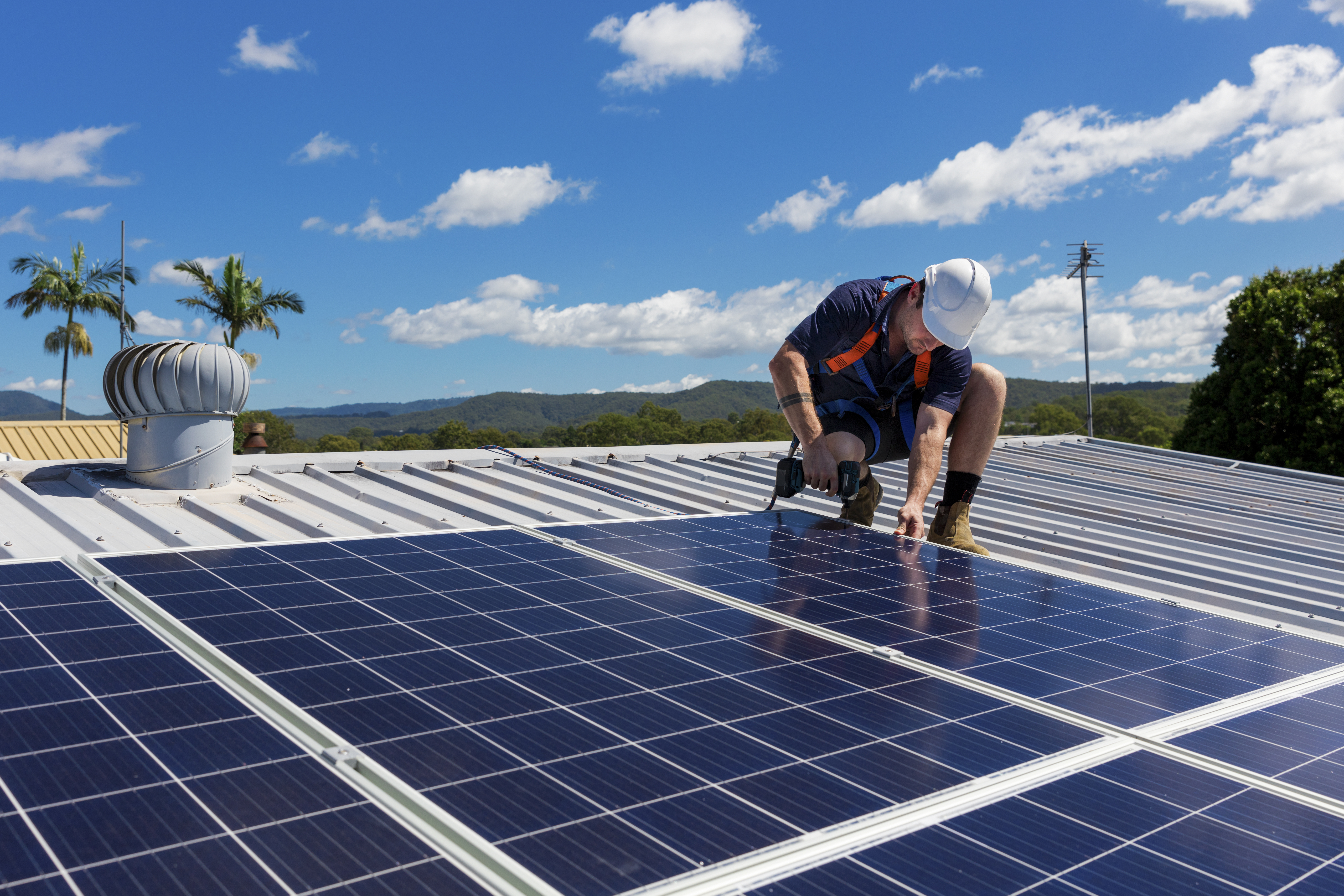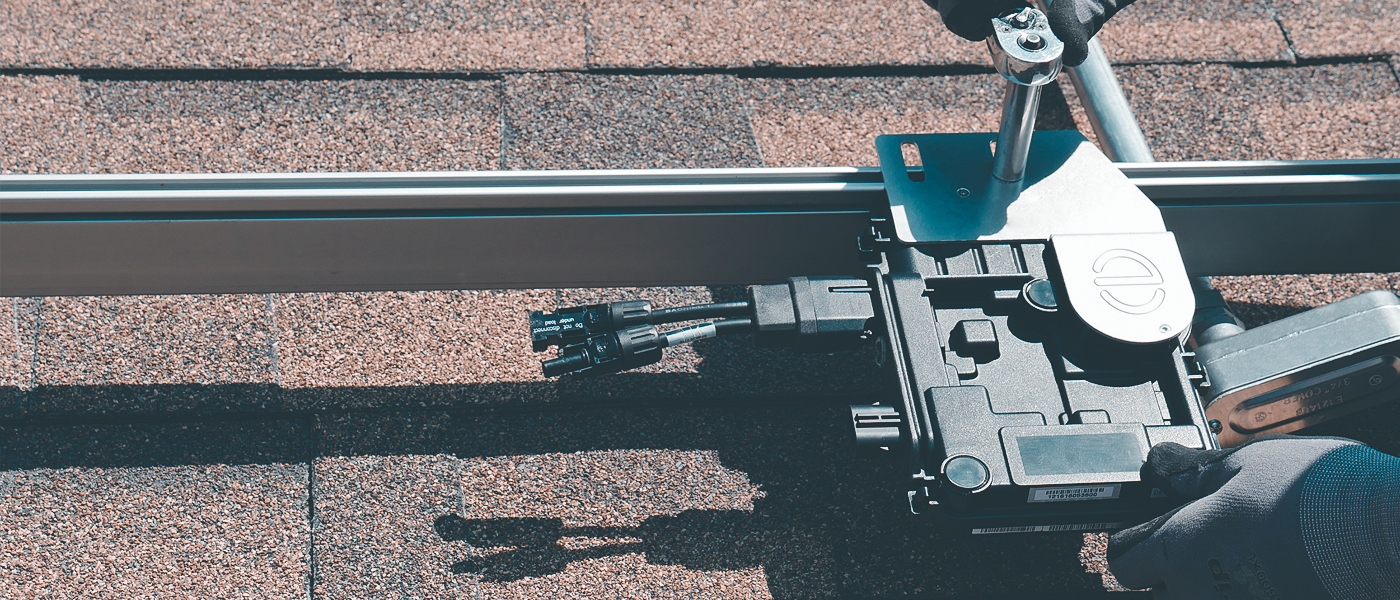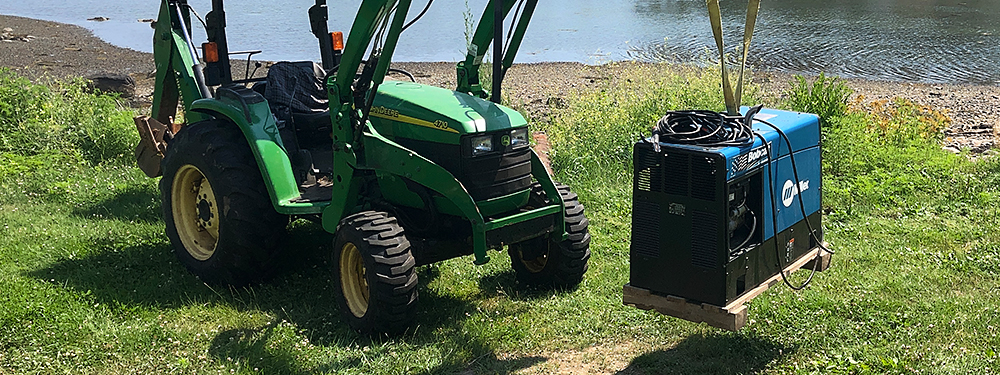Installing solar panels by yourself can be a cost-effective and rewarding experience; you can save a significant amount of money by cutting contractors out of the equation and take pride in your own handiwork.
However, for the aspiring solar DIY-er, knowing how to install solar panels can seem daunting. Fear not! Whether you’re considering a grid-tie system or an off-grid solution, we’ve created a comprehensive, step-by-step solar panel installation guide to help you through each stage of the solar installation process.
Solar Installation Planning & Safety
The key to any successful solar panel installation project is having a clearly constructed plan with measures in place to ensure the safety of everyone involved.
In fact, there are a few things you can do before you even unpack your system to make sure the solar installation process goes smoothly from beginning to end. These include:
- Purchasing materials that are not included in your shipment (wiring, tools, etc.)
- Staying organized while unboxing your system
- Inspecting your shipment to ensure nothing is missing or damaged
- Reviewing safety guidelines for installing your system
Materials to Purchase
Our packages include equipment and materials to help you with a successful installation. In addition to what’s included in our packages, gather additional equipment and materials needed for installing solar panels, including:
Wiring
Your electrical wiring diagram will outline the size and length of wire needed for your project. Ask for a copy of your wiring diagram to source materials from your local hardware store.
Junction Boxes & Splices
- Use insulated lugs or other approved splicing devices (no wire nuts for DC splices).
- All junction and splice boxes must meet the voltage and amperage requirements for the circuit they are part of.
- Outdoor boxes must be rated for outdoor use.
- Ground splices typically require an irreversible splice.

AC Breakers & Sub-Panels
- AC breakers are required to import/export AC power from your equipment.
- Circuit breakers have several different mounting options. Check your AC breaker panel for a list of compatible options.
- Dedicated sub-panels are often used to combine AC solar circuits. Sub-panels do not allow for load breakers to be placed inside of them.
- AC sub-panels must be sized with enough headroom to cover the output coming in from the solar circuits.
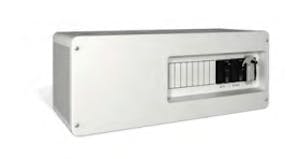
AC Disconnects & Fuses
- Most systems require a lockable safety disconnect.
- A conventional connection that backfeeds the grid will require a non-fused manual AC Disconnect. This may be included with your system—check the parts list on your quote/order form.
- A line-side tap connection will require a fused manual AC disconnect. The fusing provides the necessary overcurrent protection for the circuit.
- AC disconnects must be mounted outside, generally within 10 feet or in direct line of sight of your main billing meter. Check with your AHJ (Authority Having Jurisdiction) for specific details on placement requirements.
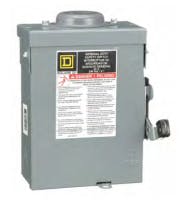
PV Meters
- If you’re installing a grid-tied system, your utility may require a dedicated PV meter to measure production coming from the solar array.
- In many cases, you just need to install the meter socket or base. The utility company will install the meter face once you are approved to activate the system.
- Contact your utility company for a list of approved meter sockets.
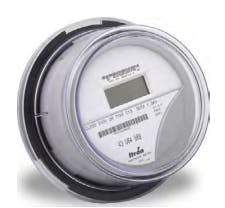
Conduits & Meters
- The NEC (National Electric Code) requires solar wiring to be transitioned to conduit before leaving the array. EMT (electrical metallic tubing) is required unless otherwise specified.
- You can use larger conduit than specified if necessary, to ease the conductors in. Never use smaller conduit than what is spec’d in your plans.
EMT vs. ENT Conduit
EMT is a thin-walled, rigid raceway that must be grounded. It is almost always made out of steel. EMT must be used unless your local authority approves ENT conduit for your project.
ENT is a non-metallic, pliable raceway that does not need to be grounded and can be bent by hand. ENT is more cost-effective and easier to work with, but is not allowed under most building codes.

Mounting Materials
Ground Mounting — Ground mounts require concrete, form bracing and 2- or 3-inch mechanical tubing. Since these materials are costly to ship, it’s cheaper to source them locally. Your racking report will specify the total linear feet of pipe and cubic yards of concrete required for the project.
You will also need lumber to build a frame to hold the pipes in place while the concrete cures. This helpful guide from IronRidge explains how it works. The ground mount section of this solar panel installation guide also contains more information on building a substructure.
Roof Mounting — Buy several tubes of roof sealant to prevent leaks and wind damage. Make sure you get a sealant that is appropriate for use with your roof material.
Also, consider buying a good drill if you don’t own one. You will be using a long 1/8 inch drill bit and a 7/16 inch deep socket for lag bolts.

Unboxing
After your system arrives, there is a 24-hour window from delivery to submit shipping claims to Unbound Solar. Unpack your system immediately when it arrives to check for damage or missing parts.
- Find a clean, open space where you can unbox and inspect your equipment.
- Place loose parts into resealable plastic bags and label them so they don’t get lost.
- Check the contents of the shipment against the packing list to verify everything is there.
- If there are any missing or damaged items, take photos for reference and contact Unbound Solar immediately to fix the issue.
- If you don’t plan to install right away, place batteries on a charger ASAP. Batteries can fail if they sit for an extended period of time without charging.
- If you bought micro-inverters or power optimizers, keep any documentation with stickers or QR codes. These will be used to create an array map later on so you know which unit controls which panel.

Safety Considerations
Since solar installation involves heavy lifting, electrical work, and potentially climbing on your roof, safety should be prioritized at all times. After all, what good is a shiny new solar system if you’re not around to enjoy its benefits?
Use our solar panel installation guide for ensuring the safety of yourself and others throughout the installation process.
Protective Equipment
Solar equipment can cause cuts, scrapes, lacerations, gouges, and puncture wounds. Use the proper equipment and remember to take breaks to avoid getting fatigued.
- Wear eye protection, gloves, and closed-toe boots at all times.
- Remove all metallic jewelry, including watches.
- Wear long sleeves when mixing concrete to avoid burning your skin. Use a roof anchor and safety harness for roof work.
Fall Protection (Roof Mounts)
If you are installing a roof-mount system, fall protection is required any time you or your helpers are on the roof.
- Install roof anchors.
- Use a safety harness attached to the anchor any time you are on the roof.
- Roof-ready boots with flat soles can help get a grip on roof shingles, tiles, or metal.
- Consider renting scaffolding and/or a boom-lift to make it easier for people and equipment to get to high places.
- Be aware of weather conditions which may make rooftop work temporarily unsafe.
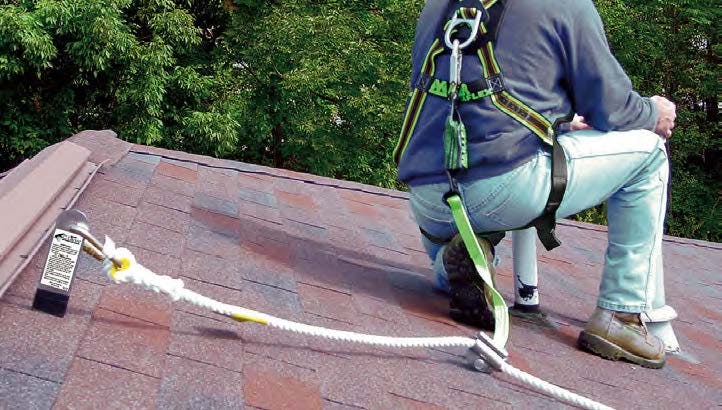
Dig Safety (Ground Mounts)
Even if your feet are firmly planted on the ground, there can still be danger afoot. If you’re ground mounting your panels, be sure to always observe the following safety precautions.
- Call the local authority before starting any digging projects to avoid hitting buried gas or electrical lines.
- If you use a concrete truck, don’t drive over septic or drainage lines, and avoid
low-hanging power or phone lines. - Avoid contact with wet concrete, which can cause caustic burns on bare skin. Wear gloves, eye protection, and long sleeves.
- Use an N-95 respirator mask if you are mixing your own concrete to avoid inhaling harmful chemicals.
- If you use heavy equipment, get training on how to operate the equipment, or have an experienced operator on site.

Electrical Safety
- Remove all metallic jewelry, including watches.
- Keep a multimeter on hand. Check conductors and terminators to confirm there are zero volts present before proceeding.
- Ensure that all wires are stripped and/or terminated properly using a torque wrench/driver when necessary.
- Route wires away from sharp edges and pinch points that could damage the wire.
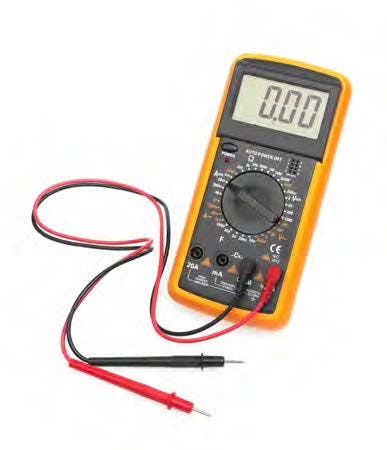
Heavy Lift Safety
- Plan your lift; know what you are moving and where before lifting.
- Have two or more people carry panels in heavy winds to avoid accidents.
- Be sure your footing is stable.
- Lift with your legs by squatting so you don’t put added stress on your back.
- Avoid twisting while lifting and keep the weight close to your body.
- Ask for help when you need it and wait for help when you have to. If you aren’t sure whether you can lift something alone, err on the side of caution.
- Use a hoist or crane to lift heavy equipment if necessary.
Wiring & Electrical
Wiring your electrical run is a critical part of any solar installation, and the specifics differ based on the kind of system you’re installing. This section of the solar panel installation guide will outline how to plan your wiring run, ground your system, and install a backfeed breaker to connect to the utility grid if needed.
Wiring Management
Wiring management is an important (though often overlooked) consideration that will make your solar panel installation easier in the long run. Here are a few tips to keep in mind:
- Plan the wiring run in advance so the wires don’t interfere with access to the array.
- Use wire clips to secure the factory wire leads in place so they don’t move in the wind or touch the roof (required under the National Electric Code). Wire clips allow you to run the wires along the rails or the frame of the solar panel.
- Many solar components use spring clamps, which require you to push down on a metal bar (or another mechanism) to open the terminal so you can seat the wire. Once the wire is firmly seated, release the spring, which clamps the wire in place.
Electrical Connection
The actual path of your wiring system will differ based on the type of system you’re installing. Below are some summaries showing how wiring is connected for each system type:
Grid-Tie Wiring Path (Centralized SolarEdge / SMA Inverter)
- PV strings to junction box
- Junction box to inverter(s)
- AC Out to main/sub-panel
You can check out SolarEdge’s HD-Wave solar panel installation video or SMA’s Sunny Boy installation video for in-depth demonstrations of the wiring process.
Grid-Tie Wiring Path (Enphase Micro-Inverters)
- PV panel to micro-inverter
- Micro-inverter to trunk cable
- Trunk cables to junction box
- Junction box to main panel
Enphase has a detailed solar panel installation video you can watch for a hands-on demonstration of the wiring process.
Off-Grid Wiring Path
- PV strings to combiner box
- Combiner box to charge controller(s)
- Charge controller(s) to battery bank
- Battery bank to inverter(s)
- Inverter(s) to load panel
- The generator also wires into the inverter (separate from the solar circuit
Array Maps for Micro-Inverters/Optimizers
If your system uses micro-inverters or power optimizers, it’s a good idea to make an array map that identifies where each device is located in the array.
These products come with stickers, QR codes or other unique identifying markers. Attach these stickers to a piece of paper to make a map of the array.
During commissioning, plug this array map into your monitoring software to tell it the location of each panel in the array. This allows the software to properly monitor production and report defective equipment.
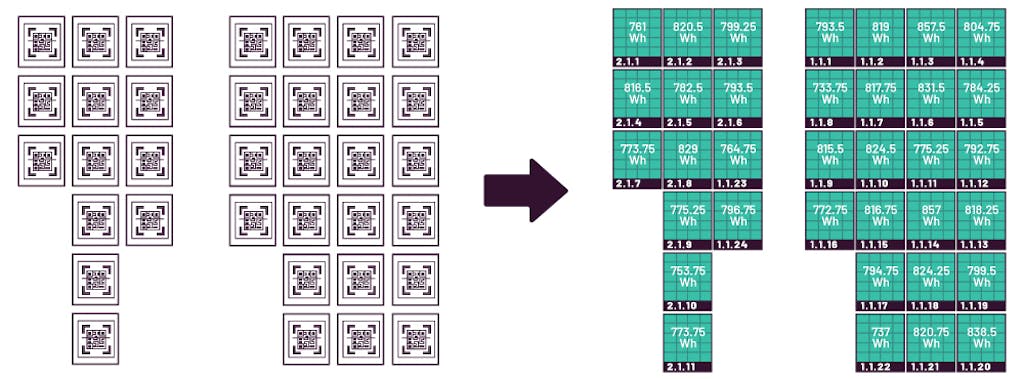
Off-Grid DC Wiring
- Off-grid systems tend to have more wire terminations and work with higher amperages. Check all AC, DC, and communication connections to be sure everything is properly connected and torqued.
- Mark connections with a paint pen after you tighten them so you know which connections have been torqued.
- If you bring combined DC power from a solar panel array to a power center, take care to terminate your solar positive wire at the SOLAR INPUT (+) busbar, not the DC BATT (+) busbar.
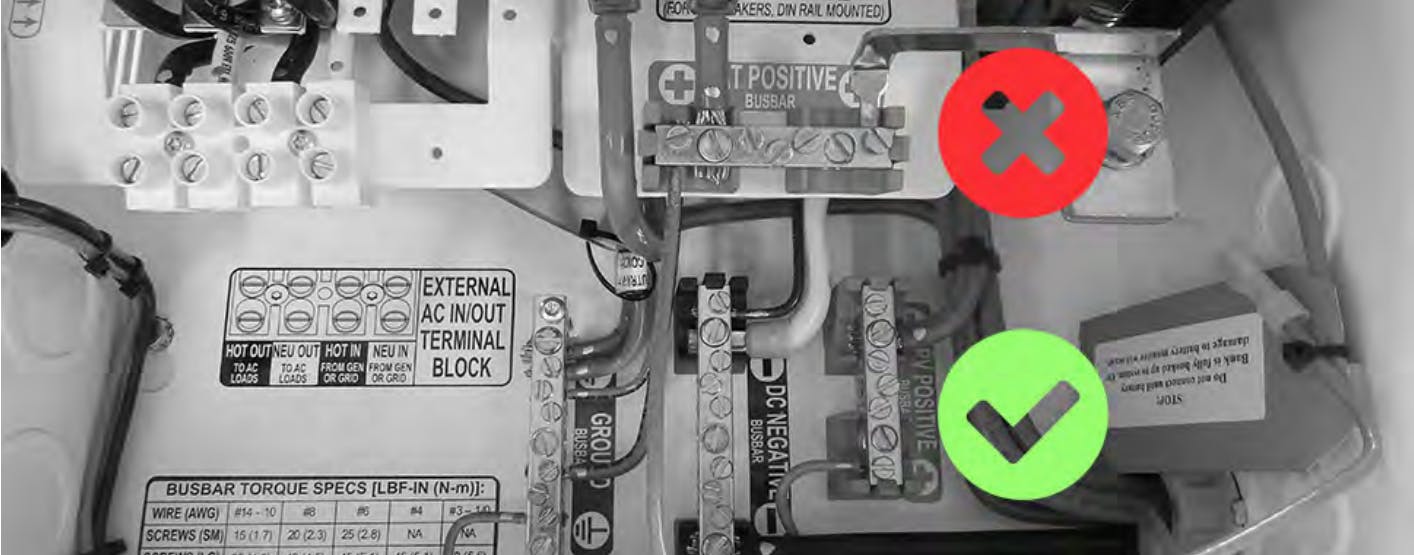
- After wiring, check terminals or busbars with a meter and determine they are operating at a safe voltage before proceeding with the rest of your build.
Planning Your Electrical Route
You’ll want to plan your electrical run beforehand, taking into consideration which type of system you’re installing.
Again, safety is of the utmost importance: make sure you wear the recommended protective equipment (gloves, eye protection, and closed-toe boots) and install the wiring according to your wiring diagram.
PV Sub-Panels
- Systems with multiple inverters can use an AC sub-panel to combine the AC circuits into a single set of conductors.
- Dedicated solar sub-panels must not contain any load breakers.
Roof Mount Electrical Route
- You can run your wiring through your attic to hide it from view, but make sure it is accessible to connect to the array, breaker box, panel, meter, and other parts of the system.
- Use cable clips to secure wiring from solar panels and micro-inverters/power optimizers. The clips should hold the wires in place during strong winds.
- Do not allow exposed wiring to make contact with the roof surface.
- Run the wiring from the solar source to a junction box, then transition to your conduit run. The wiring must remain in the conduit run until it reaches the inverter (for grid-tie systems) or charge controller (for battery-based systems).
- Use conduit mount flashings to secure rooftop conduit runs in place.
- If possible, use conduit penetration flashings to transition conduit into your attic to hide it from view.
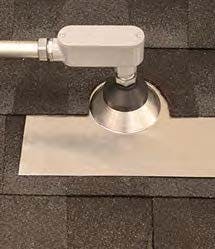
Ground Mount Electrical Route
- Use cable clips to organize exposed wiring under the array. They should be secured against strong winds and kept out of the way so they don’t interfere with maintenance.
- Call the local authority before starting any digging projects to avoid hitting buried gas or electrical lines.
- If you use a concrete truck or other heavy machinery, don’t drive over any buried gas lines, plumbing, or septic systems that could be damaged.
- Your wiring diagram will tell you how deep to dig your trench, the size/type of wiring and conduit required, and the total distance of the run. It will also take voltage drop/voltage rise into account. Refer to it often as you plan your run.
Mounting Your Inverter
Inverter installation can look different depending on the solar system type. Inverters for grid-tie systems can be wall-mounted indoors, outdoors, or rigged on the back of a ground mount substructure. Off-grid inverters must be wall-mounted indoors.
Wall-Mounted Inverters (Grid-Tie & Off-Grid)
- Follow manufacturer guidelines for installation clearances to ensure that the equipment can cool effectively.
- Inverters with integrated disconnect switches must be mounted less than 2 meters (6.5 feet) off the ground. The exception to this is if the system design contains another switch that meets the AC disconnect requirements of the NEC (National Electric Code).
- If installed in a garage, any ignition source (inverters and disconnects) must be at least 18 inches off the ground.
- If installed outside, keep the inverter out of direct sunlight and clear of any sprinkler systems.
Inverters Mounted on Ground Mount Substructure (Grid-Tie Only)
- Mount the inverter higher than 36 inches off the ground to avoid mud splatter during heavy rains.
- Keep the inverter out of direct sunlight.
- Use threadlocker on the hardware that secures the inverter bracket to the support structure.
If you want to learn more, check out our article on solar inverters.
Grounding Your System
Properly grounding the electrical components of your solar system is an essential step. For one, grounded electrical connections reduce the risk of shock, power surges, and build-up of static electricity. Moreover, if the circuit fails, grounding allows a safe pathway for fault current.
Metal parts of an electrical system must be connected (bonded) to the ground, and conductive materials (EMT, metal boxes, etc.) must be grounded together. The latter ensures that each piece of equipment in the system shares the same resistance to the ground, or “ground reference.”
The following sections of our solar panel installation guide outline grounding methods and some extra tips to help you ground your system properly.
EGC and GEC Grounding
- EGC (Equipment Grounding Conductor) is the green or bare copper wire that connects the racking hardware, metal enclosures, and EMT conduit together.
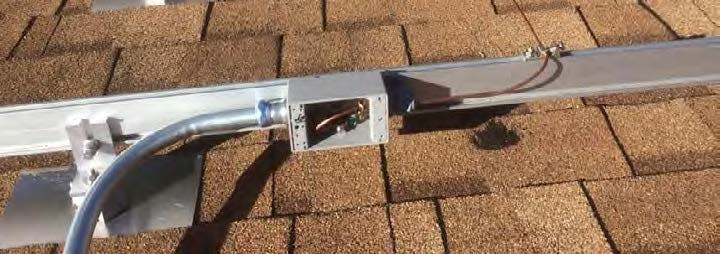
- GEC (Grounding Electrode Conductor) is the wire connecting the ground rod to the electrical distribution service. In most AC power systems, the neutral conductor has a single bonding point where it is connected to the ground.
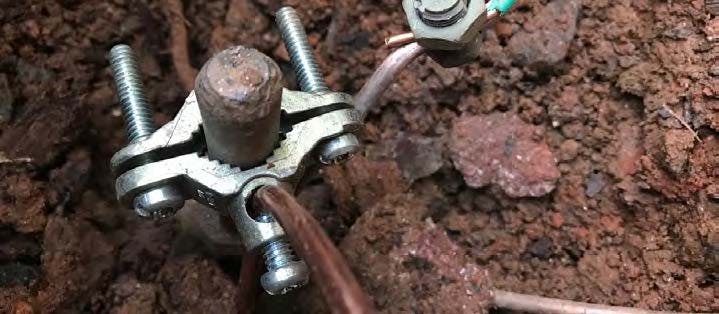
- Neutral to ground bonds can be found in generators, breaker distribution panels, power centers, and other equipment. Your system should only have a single neutral-to-ground bond.

- A DC negative to ground bond is necessary for any system. It is included with any system that features “ground fault protection.”

Integrated Grounding
- IronRidge’s UFO (Universal Fastening Object) and bonded fasteners make it so that an entire solar array can be grounded with a single grounding lug.
- Other mounts, like pole mounts, will not have integrated grounding solutions. Each panel and racking component needs to be grounded using UL listed grounding clips or lugs.
Backfeed Breaker Installation (Grid-Tie Only)
Grid-tie solar systems require a backfeed breaker, which is a device added to your main breaker panel. This enables your system to feed the power it generates into the utility grid.
A solar backfeed breaker is installed at the opposite end of the breaker panel from the grid input breaker. You may need to re-arrange circuits in the breaker panel to put the solar breaker in the last position.
If you need to make room for an extra breaker, Tandem Breakers make a single slot on the breaker panel that serves two circuits on the same phase (these are different from 120/240-volt multi-phase breakers).
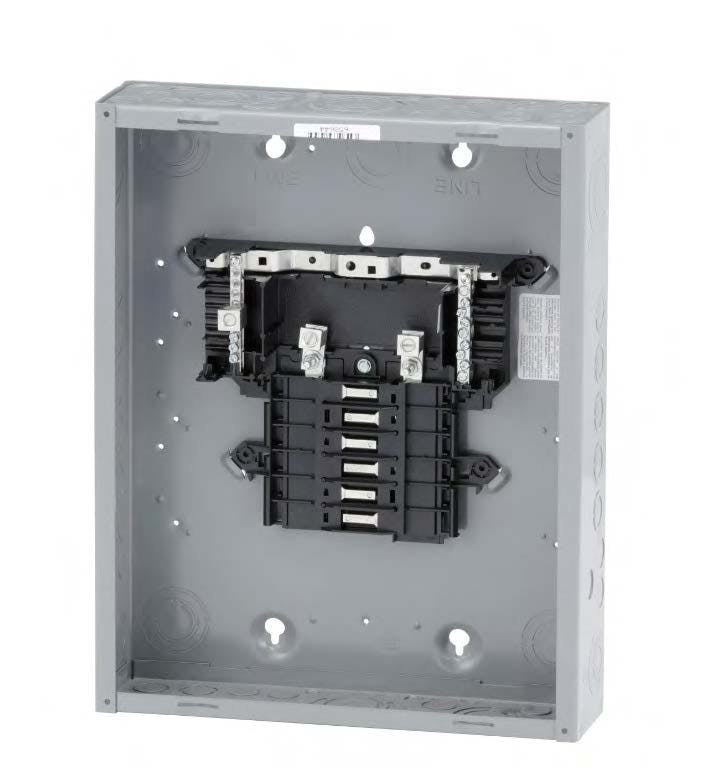
How to Install a Backfeed Breaker
If you’re not comfortable working on your breaker panel, don’t be afraid to call a professional electrician. Many of our customers DIY their solar array and bring in a professional for the electrical work.
That said, if you’re comfortable (and safe!) with this kind of work, here’s a step-by-step outline of how to get a backfeed breaker hooked up:
- Determine the proper breaker size and source a breaker that will work with your existing panel. It’s ideal to use the same make and model as other breakers in the panel.
- As you work, stand on plywood or a rubber mat to insulate yourself from the ground. You will want to gather insulated tools and a voltmeter with fresh batteries before you begin.
- Shut off the branch circuit breakers one at a time.
- Shut off the main circuit breaker.
- Remove the panel cover.
- Test all the wires with a multimeter to make sure there’s no current before proceeding.
- Disconnect the wire of the breaker you’re removing from the load terminal.
- Carefully pull out the old breaker, paying close attention to how it’s positioned.
- Insert the new breaker and push it into position.
- Attach the properly stripped solar circuit wires to the breaker terminals and torque into place.
- Inspect the panel for any other problems. Tighten any loose terminals.
- Replace the panel cover.
- Turn on the main breaker.
- Turn on the branch breakers one by one, leaving solar for last. Do not turn on the solar backfeed breaker until after inspection and interconnection agreement are completed.
- Test the breakers with a multimeter to make sure everything works.
Mounting Your Solar Panels
With a solid wiring & electrical plan in place, the next step is mounting your solar panels. Whether you decide to roof mount or ground mount your array, the following sections will outline everything you need to build a solid mounting foundation.
Roof Mounting
If you decide to roof mount your solar panels, there are 5 main steps to take:
- Locate and mark roof rafters
- Install roof attachments to secure your rails in place
- Install racking rails
- Lift panels on to your roof
- Mount panels on your rails

Step 1: Marking Roof Rafters
For a sturdy foundation, roof-mount flashings should be bolted to your roof rafters. There are a couple of methods for locating where exactly your rafters are:
Visual Location
Look for rafters under the eaves of your roof. If you can’t spot them, look for the nails that hold the fascia board and/or gutter to the ends of the rafters.
Echo Location
If it’s safe, you can get a feel for where your rafters are by walking around on your roof. The rafters will feel firm, while the space between them will feel a little spongy. You can also use a rubber mallet to tap around on the roof and listen/feel for the rafters.
This method is less effective on roofs with skip sheathing (a layer of boards that sit perpendicular to the rafters). The boards cover the rafters, which makes it difficult to know whether you’ve found a rafter or a skip sheathing board.
Exploratory Drilling
If none of the previous methods work, you can drill exploratory holes in your roof to search for rafters.
- Start where you plan to place your first flashing and drill a small hole in your roof.
- If the drill does not hit a rafter, bend a metal wire into an L shape and insert it into the hole.
- Rotate the wire to see if it hits a rafter.
- Once a rafter is found, measure 0.75 inches from the edge to the center of the rafter. Mark this location so you can drill the lag bolt directly through the center of the rafter.
- If you have attic access, you can follow this process from the inside of the attic. Drill a hole on one side of the rafter, leaving the drill bit sticking through the roof so you can locate it from the outside. Once you climb on the roof, measure 0.75 inches from the drill bit to the center of the rafter to mark the location of the lag bolt.
Mark Rafters with Chalk Lines
Once you mark both endpoints of each rafter, you can connect them with a chalk line on top of the roof. This will give you a visual indication of where to line up your flashings. The chalk will wash away the next time it rains, so don’t worry about the lines being permanent.
- Attach the chalk line at the starting point of the line.
- Pull the string loaded with chalk out of the chalk reel.
- Secure the chalk line at the endpoint of the line.
- Use your finger to press the middle of the chalk line against the roof.
- Pull up on the line, then let go so it “snaps” against the roof. The impact will leave a temporary line of chalk for you to work from. Do this on both sides of the point where you are holding the line in place.
- Repeat until you have marked the location of each rafter in chalk.
Step 2: Install Roof Attachments
With the location of your roof rafters marked, it’s time to start installing the attachments that will secure your mounting rails in place.
Depending on the type of roof you have, the process will differ, but we’ve included steps for the most common types below, along with some tips on spacing and layout for flashings.
Spacing and Layout Tips
Your flashings should be spaced to align with the mounting holes on your solar panel. The distance between mounting holes will be listed on the panel spec sheet.
Stagger the flashing layout so that they alternate between the top and bottom rail. Distribute the flashings evenly across all your roof rafters to spread the weight of the array across the entire mounting surface.
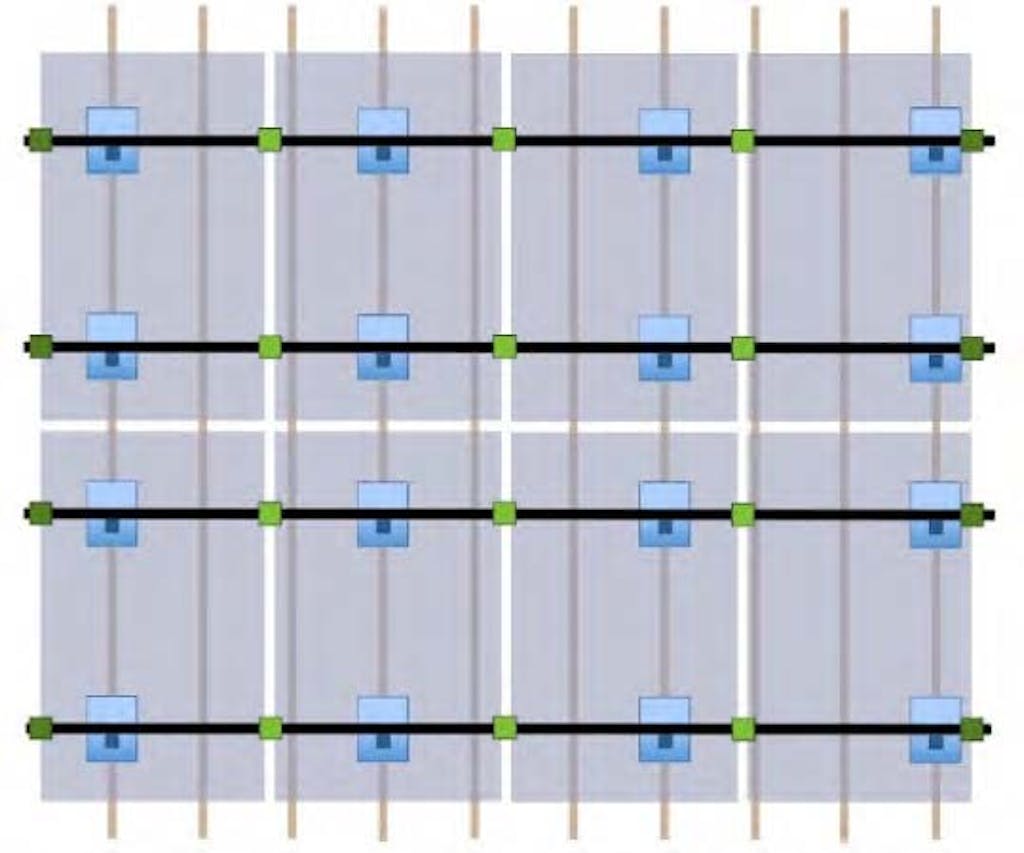
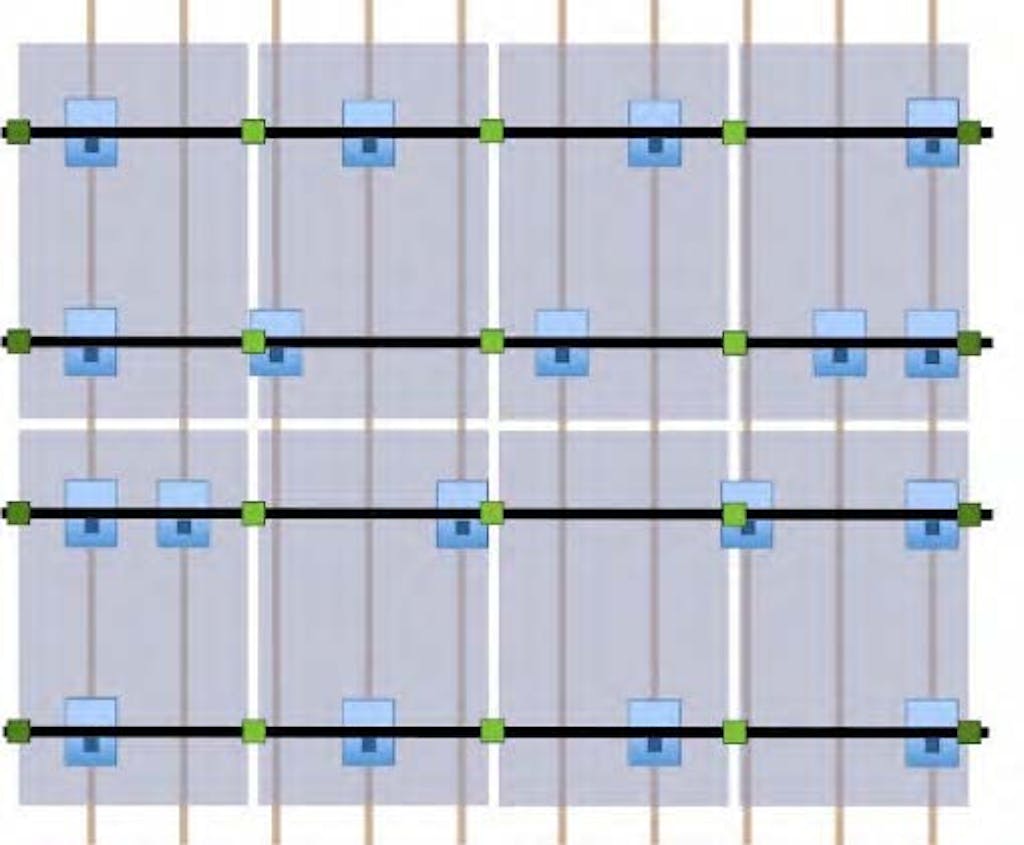
The layout on the left is more visually appealing, but all of the wind/snow load is concentrated on a few rafters. The staggered layout on the right makes for a more structurally sound array.
Composite / Asphalt Shingle Roof
Our systems commonly use the Ironridge Flashfoot 2 flashing system for composite/asphalt shingle roofs, so we’ve included installation instructions for that product here. If your system uses different flashings, consult the manufacturer’s manuals for installation instructions.
- Gently break the seal between the shingles with a flat bar.
- Remove any nails that would prevent you from sliding the flashing under the shingle.
- Slide the flashing under the shingle, lining up the hole with the marked rafter.
- Tuck the flashing into place. The bottom edge of the flashing should sit above the drip line (the bottom edge of the shingle). The top edge of the flashing should reach into the third course of shingles (see reference image).
- Mark the drilling location through the hole in the flashing.
- Remove the flashing and drill a pilot hole using a 7/32 inch drill bit. Double-check to make sure the hole is in a rafter.
- Fill the hole with roof sealant and place the flashing.
- Use an impact drill with a 1/2 inch deep socket to tighten to the flashing manufacturer’s specifications.

Metal Roof
Metal rooftops use roof clamps that either attach onto a seam or bolt into the structure. There are dozens of clamp configurations and each one is a little bit different, depending on the rooftop. Check with the clamp manufacturer for specific installation instructions.
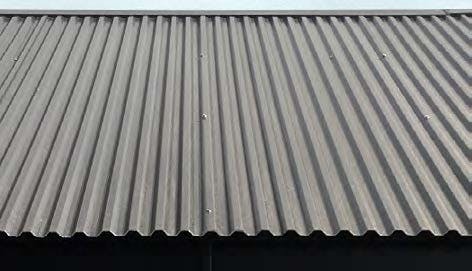
Tile Hooks
Tile hooks slide under the shingles and fasten to the rafters. A vertical hook provides clearance from the roof tiles. Your racking rails bolt into slots in the tile hooks. Tile hook installation may require some cutting or grinding of tiles, but they are generally universal and work on most tile rooftops.
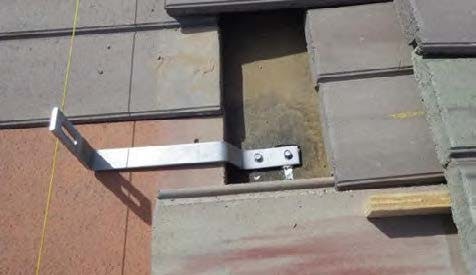
Tile Replacements
If you bought a tile replacement system, you will remove tiles on your roof and swap them out for the tile replacement flashing. A lag bolt is bolted to the rafter through the tile replacement, which serves as a foundation to attach the rails.
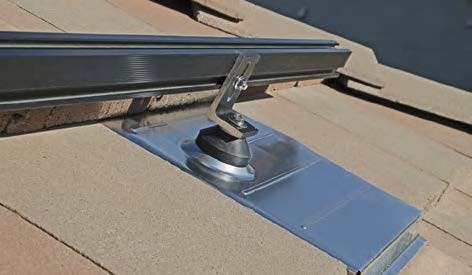
Ballasted Mounts for Low-Slope/Flat Roofs
Ballasted mounts do not require you to make penetrations in your roof—the weight of the racking base and the array itself holds the system in place.
Ballasted mounts only work on flat or low-slope roofs. Higher tilt angles mean less downward force holding the array in place, which makes them ineffective on steeper rooftops.
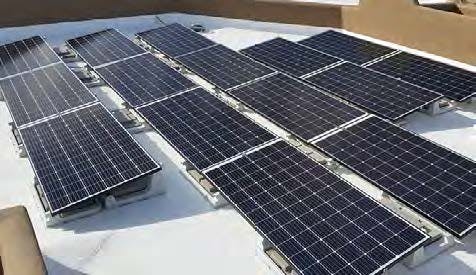
Step 3: Install Racking Rails
With the flashings in place, you’re ready to attach the racking rails. Be sure to keep your Racking Report handy during this step–it specifies rail size and spacing for your system.
- Measure and cut your rails on the ground so you don’t get metal shavings on your roof.
- Rails should be spaced to match the distance between the mounting holes on the back of the solar panel frame. The flashings need to match this spacing as well.
- Use the supplied hardware to attach the rail to the flashing. (Pro tip: install the lower rail flashings on the upslope side of the rail so that the array hides the flashings from view.)
- Use a level to ensure the rails are even. The slots in the L-feet allow for vertical adjustment if needed.
- Tighten rails with a quality torque wrench according to the manufacturer’s torque specs.
- Attach plastic end caps to keep spiders, bees, and other critters out of the rails.
- Attach wire management clips and any hardware for micro-inverters/optimizers to the rails.
- Install grounding equipment as you install your rails. IronRidge systems contain one grounding lug per array.
- When starting a new row, leave space to account for the panel overhang on both sides, as well as a ½- to 1-inch clearance gap between the panels.
Step 4: Getting Panels On Your Roof
Remember: safety first! As you prepare to move your panels onto the roof, keep in mind the safety procedures outlined in the Planning & Safety section of this guide. Be sure to wear protective equipment, use fall protection, and never stand on panels or lift them by the electrical wires.
If you want, you can wrap your panels in a blanket to protect them from hard surfaces as you move them.
Lifting Methods
Chances are, you’ll want to rent some equipment to help lift the panels on your roof. There are a few options to choose from:
Ladder Lift. A ladder with a conveyor belt mechanism on it to help move heavy objects up and down the ladder.
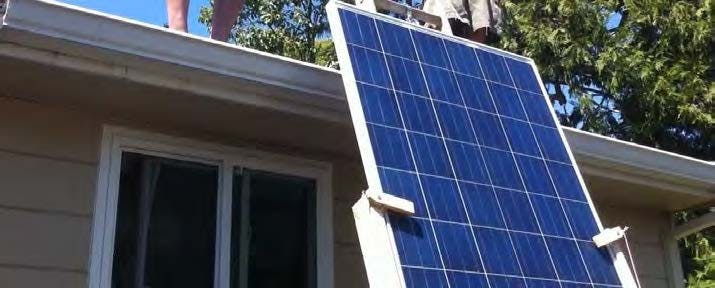
Scissor Lift. A lift which extends up and down, as well as side-to-side. The horizontal movement means you can take fewer trips from the ground to the roof and then back again.

Boom Lift. A lift with a full range of movement, giving you access to tight spaces. Useful to get over and around obstacles that prevent you from parking a lift directly under the spot where you plan to install your panels.
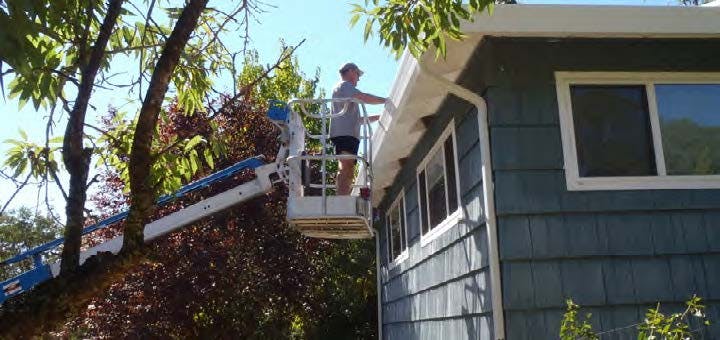
Scaffolding. Scaffolding works great if there are no obstacles and you don’t need lift assistance. There’s no mechanism to make lifting easier, but it does offer a sturdy platform to work on and some extra fall protection.

Step 5: Mounting Panels
Now that you’ve got your installed racking and panels in the same place, you can finally put the two together and mount your panels!
The instructions outlined below use the IronRidge racking system (XR10, XR100, and XR1000), which comes standard with all of our packages, as an example. If you purchased a specialty mount (like a pole mount), consult the product manual for instructions on how to mount your panels.
- Place the panel so the mounting holes line up with the rails.
- Use the IronRidge UFO (Universal Fastening Object) clamps to secure the panel in place. Start with the end on the outside edge of the array and drop the T-bolt in the slot in the rail.
- Torque the UFO clamps with stopper sleeves (one in each rail) so they are snug against the outside of the first panel, locking it into place.
- Slot the next pair of UFO clamps on the inside edge of the first panel.
- Place the next panel on the rails, so that the clamps are wedged snugly between both panels.
- Tighten the clamps between the panels.
- Repeat this process for each panel in your array. Use the UFO with stopper sleeves attachment to secure the final panel in the row.
Ground Mounting
If you decide instead to ground mount your solar panels, there are 3 key steps:
- Build a foundation
- Install racking railing
- Mount panels on your rails
Step 1: Building a Foundation
Though ground mounting is quite a bit different from roof mounting, some of the same principles apply. First, you’ll want to construct a solid foundation upon which you’ll mount your racking rails.
Our ground mount racks use the IronRidge Ground Mount system. We provide an engineering report that specifies how deep and wide to dig anchor holes, pier spacing, and placement, as well as how much concrete and pipe to buy.
Follow the specs outlined in your Engineering Report (provided by Unbound Solar®) to ensure the structural integrity of your ground mount.
Pouring Concrete & Setting Piers
Always use proper protective gear (outlined previously in Planning & Safety) when working with concrete. Wet concrete will cause serious burns if exposed to the skin for prolonged periods. In addition, a respirator with a minimum rating of N95 is required when working near concrete dust.
Bearing safety precautions in mind, here are some guidelines for pouring concrete & setting up piers.
- Check if your site is level. Considering leveling the grade if necessary.
- Use chalk or a string line to mark the outer dimensions of the array and the locations of your piers on the ground.
- Call the local authority to locate buried power lines and septic systems before you dig. Do not drive heavy machinery (like a cement mixer) over the buried lines.
- Carefully follow the pier placement and hole depth/width outlined in the engineering report.
- Create a temporary lumber substructure to keep piping in place while the concrete hardens. If pipes move before the concrete is fully cured, that can compromise the structural integrity of the mount.
- Underground pipe should be fully suspended in concrete. If the pipe touches the dirt, it can cause galvanic corrosion that will detract from the strength of the structure.
- Get everything else in place before you mix your concrete. Once the concrete is wet, you won’t have time to adjust forms and make changes.
- Wait at least a week between setting piers and building the rest of the array. Concrete will take up to 21 days to fully cure. Leave the wooden brace in place until the concrete is fully cured.
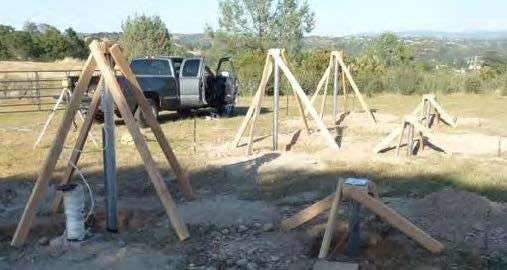
Step 2: Installing Racking Rails
Your Racking Report will specify rail size and spacing for your system. Keep it handy during this step.
- Space the rails to match the distance between the mounting holes on the back of the solar panel. Your racking report has the exact measurements.
- The Ironridge Ground Mount system uses a rail connector bracket which attaches the rails to the horizontal support pipes using U-bolts.
- When starting a new row, leave space to account for the panel overhang on both sides, as well as a ½- to 1-inch clearance gap between the panels.
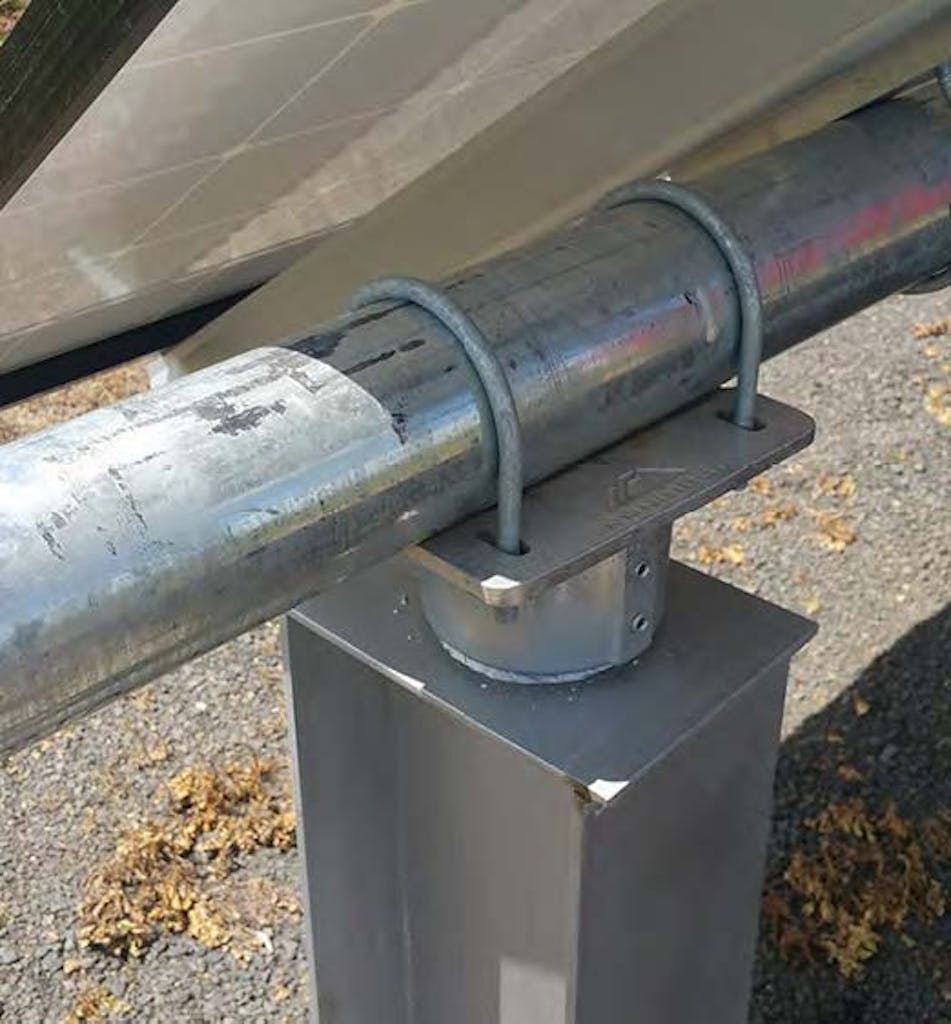
Step 3: Mounting Panels
With your racking rails installed and housed in a solid concrete foundation, your panels are ready to be mounted.
The instructions provided below use the IronRidge ground mount racking system as an example. If you purchased a different racking solution (such as a ground mount system from Unirac), consult the product manual for instructions on how to mount your panels.
- Place the panel so the mounting holes line up with the rails.
- Use the IronRidge UFO (Universal Fastening Object) clamps to secure the panel in place. Start with the end on the outside edge of the array and drop the T-bolt in the slot in the rail.
- Torque the UFO clamps with stopper sleeves (one in each rail) so they are snug against the outside of the first panel, locking it into place.
- Slot the next pair of clamps on the inside edge of the first panel.
- Place the next panel on the rails, so that the clamps are wedged snugly between both panels.
- Tighten the clamps between the panels.
- Repeat this process for each panel in your array. Use the UFO clamps with stopper sleeves to secure the final panel in the row.
Solar Battery Installation
If you’re installing an off-grid system (or a grid-tie system with a battery backup) the last step of installation for your system will be to install a battery bank.
There are three types of batteries used in solar storage systems:
- Flooded Lead-Acid Battery
- Sealed Lead-Acid Battery
- Lithium-Ion Battery
Each of them has unique requirements in terms of installation and battery room design, detailed in the sections below.
Lastly, be sure to consult the manufacturer’s installation instructions and datasheets (such as this manufacturer’s guide for Crown batteries) for important installation instructions. We have provided some general guidelines in this solar panel installation guide, but each manufacturer does things a bit differently, so it’s best to refer to their specific guides when in doubt.
Safety Tips
As with every step of the solar panel installation process, proper safety precautions should always be taken. Before working with batteries, review the following safety guidelines:
Safety Guidelines For All Batteries
- Be careful to never short-circuit a battery! A short circuit occurs when the positive and negative terminals of a battery are connected together, either from improper wiring or when a metal object falls onto the battery terminals. Use insulated tools and be cautious to avoid short circuits.
- Remove all metallic jewelry, including watches and rings. Secure any long hair and avoid loose-fitting clothing that could get caught on wires or terminals.
- Always wear protective gloves and safety goggles when working with your batteries.
- Keep a multimeter with fresh batteries on hand. Use it to check conductors to verify voltage and polarity.
- Ensure that all wires are stripped and/or terminated properly using a torque wrench/driver when necessary.
- Route all wires away from sharp edges and pinch points that could penetrate and damage the wire.
Additional Safety For Flooded Lead-Acid Batteries
- Keep baking soda and an eye-wash kit on-hand. Baking soda is used to neutralize acid spills.
- Always wear nitrile gloves and safety goggles when working with flooded lead-acid batteries.
Battery Room Designs
Your battery bank should be installed in an enclosure to limit accidental contact with the batteries. The enclosure should allow for ventilation and leave enough space for batteries to cool effectively.
While you will need to consult your wiring diagram and manufacturer’s manuals for specific installation instructions, this section contains broad advice about designing and installing a safe enclosure for each kind of battery bank.
Sealed Lead-Acid & Flooded Lead-Acid Battery Room Design
Heat has a major impact on battery lifespan. While batteries can safely operate in a broad temperature range, the ideal ambient temperature for your battery bank is 77°F.
Prolonged exposure to higher temperatures will shorten battery lifespan, while lower temperatures reduce battery capacity. Install your battery bank in a temperature-controlled environment to keep them as close to the target temperature as possible.
That said, natural fluctuations in room temperature based on time of day and seasonal factors are perfectly acceptable. The main concern is prolonged exposure to extreme temperatures. According to Battery University, batteries lose half their lifespan for every 15°F of continuous exposure over the ideal temp of 77°F.

Considerations for Sealed Lead-Acid Battery Rooms:
- Keep a whiteboard or notepad in the room to record battery data during maintenance checks. You can also use the Battery Maintenance Log provided at the end of this solar panel installation guide.
- Sealed lead-acid batteries do not off-gas as a normal part of operation, but they still have valves that will open if they are overcharged or overheated.
- Make sure the floor is structurally sound and can hold the weight of the batteries.
Considerations for Flooded Lead-Acid Battery Rooms:
- Flooded lead-acid batteries should be installed over a spill containment tray.
- Keep a whiteboard or notepad in the room to record battery data during maintenance checks.
- Flooded batteries off-gas hydrogen when they are charging and must be installed in a properly vented battery enclosure that is built according to fire and electrical codes. Consider buying a hydrogen gas monitor and don’t keep anything in the room that could ignite the gas.
- Make sure the floor is structurally sound and can hold the weight of the batteries.
Lithium-Ion Battery Room Design
Temperature can have a major impact on battery performance. Li-ion batteries can be sensitive to extremely cold temperatures and typically cannot handle being charged below freezing (32°F/0°C).
Check your battery manufacturer’s guidelines on the acceptable temperature range for charging and discharging the batteries. Install batteries in a temperature-controlled environment to keep them within the recommended operating range.
Considerations for Lithium-Ion Battery Rooms:
- Keep a whiteboard or notepad in the room to record battery data during maintenance checks.
- Make sure the floor is structurally sound and can hold the weight of the batteries. If mounting on the wall, make sure the wall is structurally sound to support the load.
Battery Bank Installation
Unsurprisingly, battery bank installation methods will be different depending on type and manufacturer. Included below are some general guidelines to follow while installing your batteries, arranged by battery chemistry.
Sealed Lead-Acid Battery Installation
- Though your batteries are sealed, they may release a small amount of flammable gas if overcharged/overheated. Do not install it close to electrical equipment or appliances that could discharge sparks.
- Batteries should be well-ventilated to keep them in a safe temperature range. Ventilation and other installation requirements for battery systems are covered under NEC article 480.10.
- The battery case should not come in contact with organic solvents or adhesive materials.
- Use UL-listed terminal lugs on battery interconnects, crimped according to the manufacturer’s guidelines.
- Leave at least 1 inch of space between each battery to provide adequate ventilation and cooling.
- If the batteries will be subject to vibration (for example, in an RV system), fasten the battery bank securely and consider using shock-absorbent material inside the enclosure.
- Do not attempt to dismantle or touch the inside of the battery! Sealed lead-acid batteries will not leak under normal conditions, but they could spill if they are damaged. If accidental contact is made with the electrolyte, wash the affected area with liberal amounts of water, and seek IMMEDIATE medical attention.
- Baking soda can be used to neutralize small acid spills.
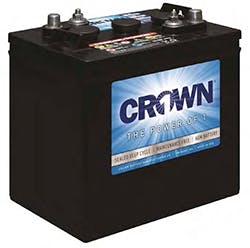
Ventilating Sealed Lead-Acid Batteries
Sealed Lead-Acid Batteries do not off-gas as a normal part of operation. However, they still have vents to relieve internal pressure in case of overcharging. If the battery is exposed to overheating, excessive voltage or current, it will release gas.
Though off-gassing is rare for sealed batteries, it could still happen in a worst-case scenario. Because off-gassing is possible, the battery enclosure needs to be ventilated properly. In many cases, building codes will apply the same requirements as they do for flooded lead-acid batteries.
Your vent should be at the top of the battery enclosure at the highest point so the hydrogen can escape. Seal any conduit to prevent hydrogen gas from going through your conduit and into your inverter and other equipment. Also, be sure there is nothing blocking the vents so that air can circulate freely.
Flooded Lead-Acid Battery Installation
- Wear nitrile gloves while installing or maintaining your batteries to prevent exposure to the battery electrolyte.
- Batteries should be well-ventilated to keep them in a safe temperature range and prevent the buildup of hydrogen gas. Ventilation and other installation requirements for battery systems are covered under NEC article 480.10.
- The battery case should not come in contact with organic solvents or adhesive materials.
- Use UL-listed terminal lugs on battery interconnects, crimped according to the manufacturer’s guidelines.
- Leave at least 1 inch of space between each battery to provide adequate ventilation and cooling.
- If the batteries will be subject to vibration (for example, in an RV system), fasten the battery bank securely and consider using shock-absorbent material inside the enclosure.
- Do not attempt to dismantle or touch the inside of the battery! Battery acid will burn your skin. If accidental contact is made with the electrolyte, wash the affected area with liberal amounts of water, and seek IMMEDIATE medical attention.
- Baking soda can be used to neutralize small acid spills.
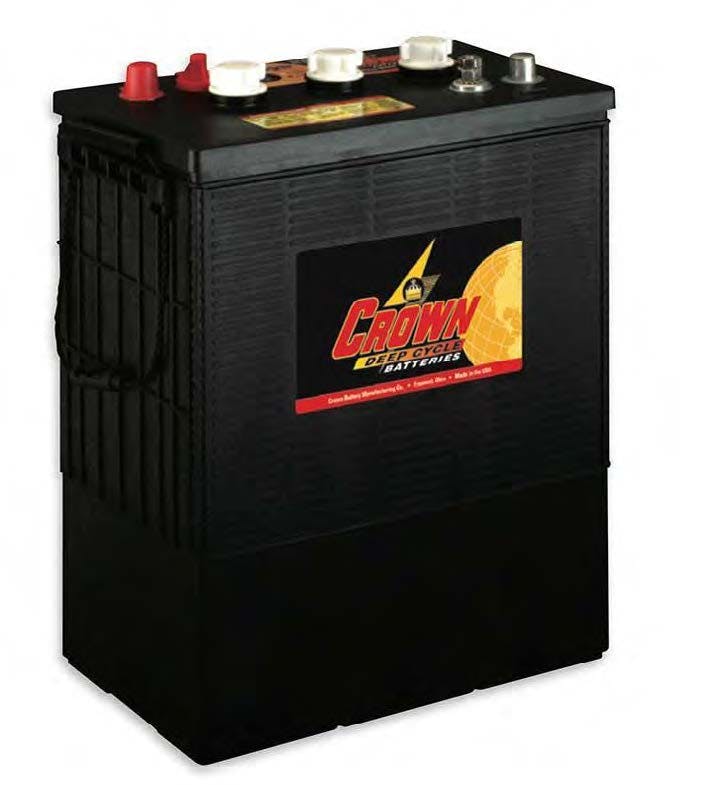
Ventilating Flooded Lead-Acid Batteries
Flooded lead-acid batteries off-gas a small amount of hydrogen gas as a normal part of their operation. The battery room must be well-ventilated to keep the Hydrogen gas levels below a safe threshold (less than 1% concentration by volume).
Battery rooms should be ventilated at a minimum rate of 1.5 cubic feet per minute. Make sure there is nothing blocking the vents so that air can circulate freely. Larger systems will typically use a battery vent fan to actively expel gases.
Since hydrogen gas is lighter than air, it will rise up in the enclosure. Your vent should be at the top of the battery enclosure at the highest point so the hydrogen can escape. Be sure to seal any conduit to prevent hydrogen gas from going through your conduit and into your inverter and other equipment.
Hydrogen gas is very corrosive and flammable in high concentrations, which makes proper ventilation extremely important.
Lithium-Ion Battery Installation
- The battery case should not come in contact with organic solvents or adhesive materials.
- Use UL-listed terminal lugs on battery interconnects, crimped according to the manufacturer’s guidelines.
- Leave at least 1 inch of space between each battery to provide adequate ventilation and cooling.
- If the batteries will be subject to vibration (for example, in an RV system), fasten the battery bank securely and consider using shock-absorbent material inside the enclosure.
- Do not attempt to dismantle or touch the inside of the battery! Follow the manufacturer’s guidelines for any troubleshooting procedures.
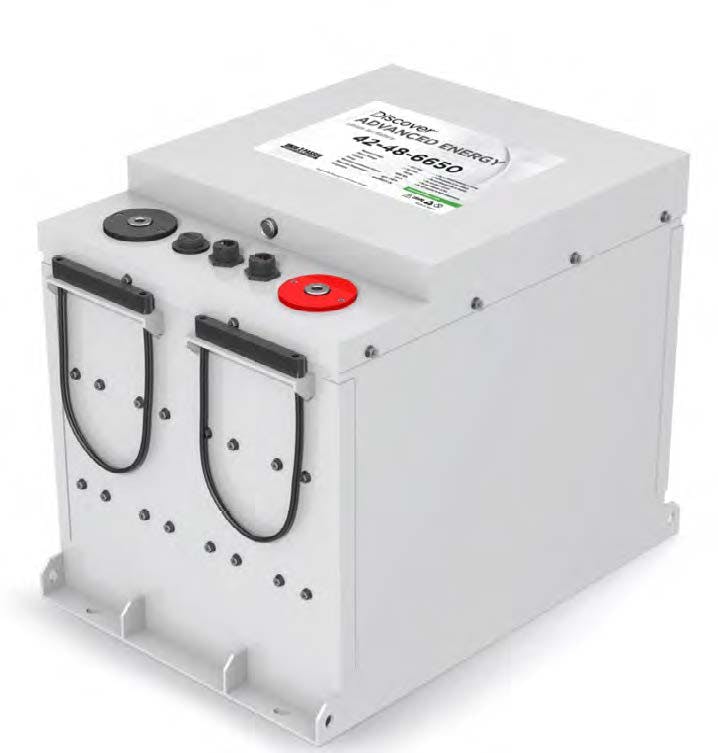
Battery Wiring
With your batteries safely installed in a suitable room, all that’s left to do is wire them together. As with installation, be sure to follow the wiring instructions provided by the manufacturer of your batteries.
However, there are some general rule-of-thumb guidelines that we recommend:
Battery Wiring Guidelines
For wires connecting the battery bank:
- All interconnection cables should be the same wire size and length.
- Do not place anything between the battery terminal and the ring terminal of the interconnect cable.
- Make sure all connections are torqued properly. Re-check them when you perform battery maintenance to make sure they are secure. Connections that are loose or excessively tight can cause melted battery terminals and other failures.
For wires running from the battery bank to the inverter(s):
- Keep the battery bank and inverter as close together as possible.
- Positive and negative cables must be of the same length.
- Positive and negative cables should be zip tied together every 18 inches and installed in the same conduit to maintain maximum surge capability and reduce electromagnetic interference.
- Route your cables so that they do not interfere with the ventilation of the battery enclosure.
Get Started On Your Solar Panel Installation
We hope this solar panel installation guide has helped familiarize you with every stage of the solar system installation process. While we have gone over general steps and guidelines, every single solar installation project is different and comes with its own unique challenges.
If you have any specific questions related to your solar system installation, please feel free to contact us. We’re dedicated to helping you get the right system for your needs, and providing support throughout the entirety of your installation process!

